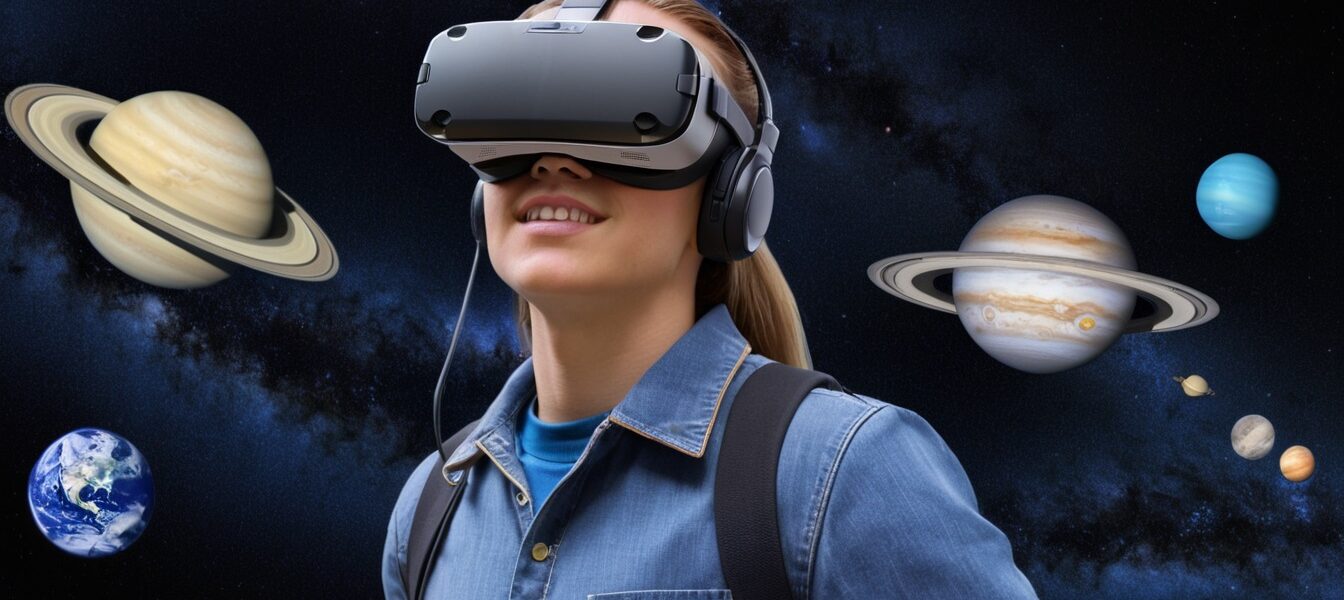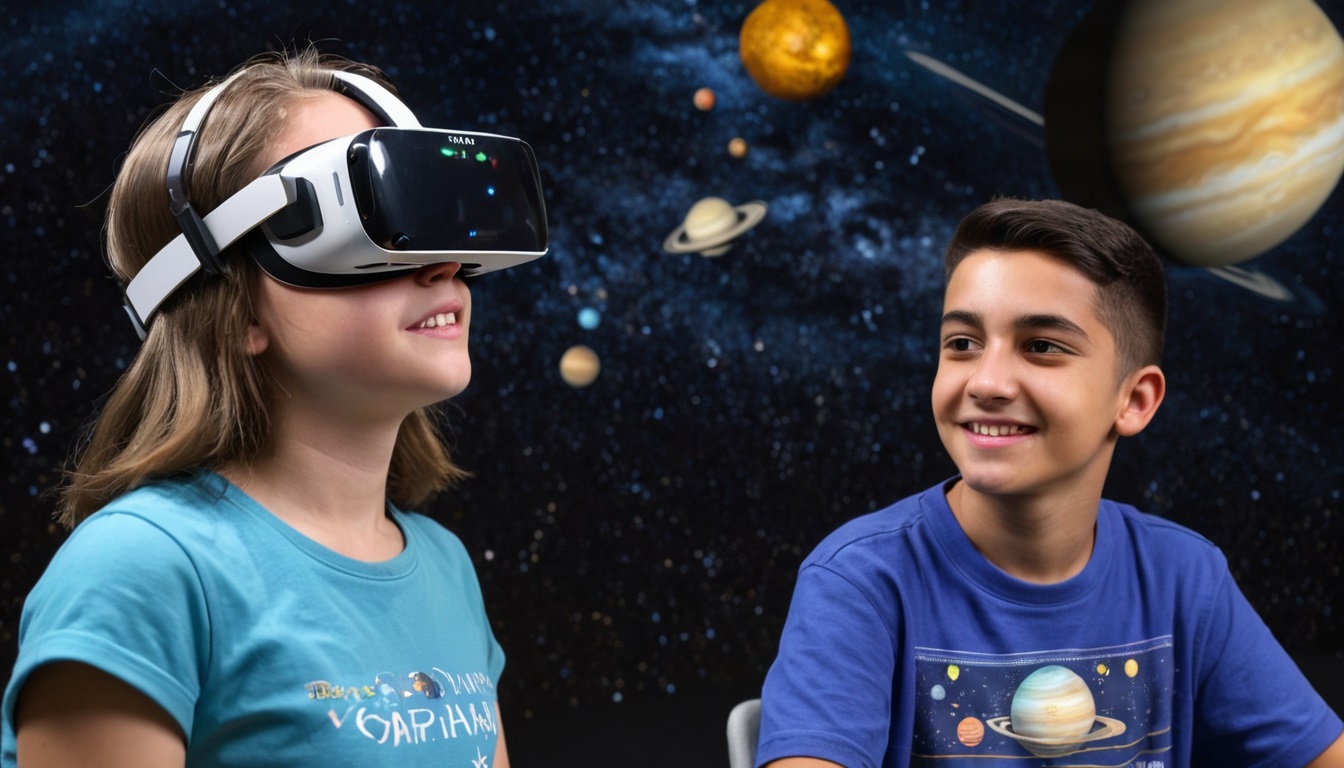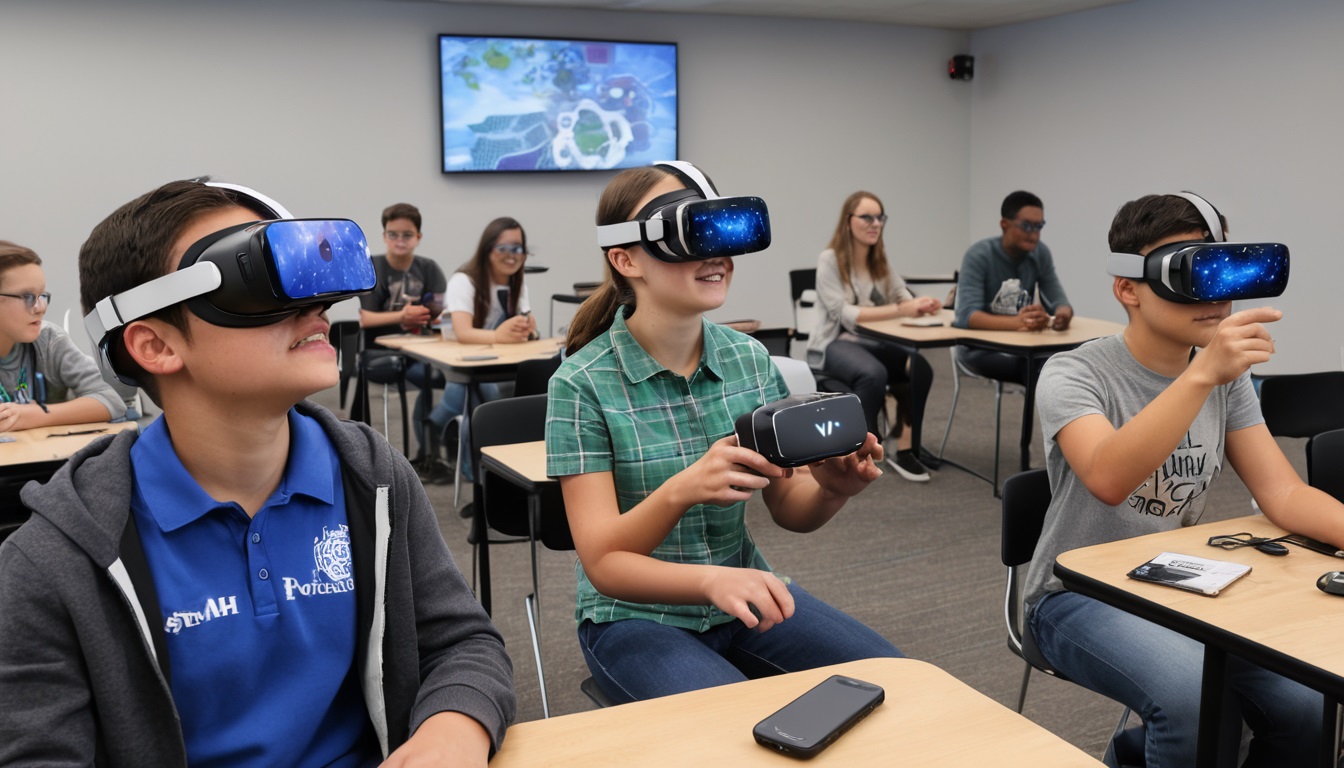Contents
- 1 Enhancing Analytical Skills Through Immersive Technology
- 2 Prof. Aécio D’Silva, Ph.D AquaUniversity
- 3 A group of students wearing VR headsets, deeply engaged in solving complex problems within a virtual lab environment, with a teacher guiding them through the process
- 4 Critical-Creative Thinking – Importance of VR and AR Labs in STEM Education
- 5 Objectives of VR and AR Labs in Supporting Critical-Creative Thinking
- 6
- 7 How VR and AR Labs Foster Critical-Creative Thinking
Enhancing Analytical Skills Through Immersive Technology
Prof. Aécio D’Silva, Ph.D
AquaUniversity
A group of students wearing VR headsets, deeply engaged in solving complex problems within a virtual lab environment, with a teacher guiding them through the process
Critical-Creative Thinking – Virtual Reality (VR) and Augmented Reality (AR) labs revolutionize STEM education by providing immersive and interactive learning experiences. These technologies make learning more engaging and play a crucial role in developing critical thinking skills. This collaborative intelligence post explores how VR and AR labs support critical-creative thinking in STEM subjects, their importance, objectives, and practical strategies for implementation.
Integrating VR and AR into STEM education bridges the gap between theoretical knowledge and practical application. These immersive technologies offer students hands-on, experiential learning opportunities that stimulate critical thinking and problem-solving skills.
Critical-Creative Thinking – Importance of VR and AR Labs in STEM Education
VR and AR labs play a crucial role in modern STEM education by:
– Enhancing Engagement: Captivating students’ attention with immersive and interactive experiences.
– Facilitating Experiential Learning: Allowing students to experience situations that are difficult or impossible to recreate in a traditional classroom.
– Visualizing Abstract Concepts: Making complex and abstract concepts easier to understand through 3D visualization.
– Promoting Accessibility: Catering to diverse learning styles and making education more inclusive.
– Fostering Global Awareness: Enabling virtual field trips and global collaborations.
Objectives of VR and AR Labs in Supporting Critical-Creative Thinking
The primary objectives of VR and AR labs in supporting critical thinking include:
- To provide immersive and interactive learning experiences.
- To enhance understanding and retention of complex concepts.
- To develop practical skills in various scientific disciplines.
- To encourage collaboration and teamwork among students.
- To inspire curiosity and a love for learning.
How VR and AR Labs Foster Critical-Creative Thinking
- Interactive Simulations and Experiments
VR and AR labs allow students to conduct virtual experiments and simulations that would be impossible or unsafe in a traditional classroom. For example, students can explore the human body in 3D, conduct chemistry experiments without the risk of hazardous reactions, or simulate space missions. These interactive experiences stimulate critical thinking by allowing students to explore and experiment in a risk-free environment, encouraging them to analyze data, make predictions, and draw conclusions.
- Visualization of Complex Concepts
AR and VR technologies enable students to visualize complex scientific concepts in three dimensions. For instance, AR can overlay digital information onto real-world objects, helping students understand molecular structures, anatomical features, or astronomical phenomena. This enhanced visualization fosters critical thinking by making abstract concepts more tangible and accessible, allowing students to question, analyze, and synthesize information.
- Problem-Solving Scenarios
VR scenarios can present students with complex problems that require critical thinking and problem-solving skills. For example, students can be tasked with designing a sustainable city, solving environmental challenges, or developing innovative engineering solutions. These scenarios encourage students to think critically, evaluate multiple solutions, and make informed decisions based on evidence.
- Collaborative Projects
VR and AR labs encourage collaboration and teamwork by allowing students to work together on projects in shared virtual spaces. For example, students can collaborate on designing a sustainable city, solving environmental challenges, or developing innovative engineering solutions. These collaborative projects promote critical thinking by requiring students to communicate effectively, consider diverse perspectives, and build consensus.
- Real-World Applications
VR and AR technologies can create immersive storytelling experiences that integrate elements from various STEM disciplines. For example, students can embark on a virtual journey through ancient civilizations, exploring historical, geographical, and scientific aspects. Scenario-based learning in VR and AR environments encourages students to think critically and apply their knowledge in real-world contexts.
- Hands-On Design and Prototyping
VR and AR labs provide tools for students to design and prototype their own creations. For example, students can use VR to create 3D models of engineering projects, architectural designs, or scientific experiments. These hands-on design activities foster critical thinking by allowing students to bring their ideas to life in a virtual space, test their hypotheses, and iterate on their designs.
- Encouraging Exploration and Curiosity
VR and AR technologies encourage exploration and curiosity by providing students with access to virtual field trips and global experiences. For instance, students can virtually visit the Great Barrier Reef, explore the surface of Mars, or tour a cutting-edge research facility. These immersive experiences inspire students to ask questions, seek answers, and think critically about the world around them.
By following this comprehensive guide, educators can successfully foster critical thinking in a VR-AR lab that transforms traditional teaching methods and provides students with immersive and interactive learning experiences.
Specifically, VR and AR labs offer transformative potential for promoting critical thinking in STEM education. By providing immersive, interactive, and hands-on learning experiences, these technologies enhance student engagement, understanding, and practical skills. Integrating VR and AR into STEM education not only prepares students for future technological advancements but also inspires a lifelong love for learning and critical-creative thinking.
References
- ClassVR – How to Integrate Augmented Reality in a STEM Lab (https://www.classvr.com/blog/how-to-integrate-augmented-reality-in-a-stem-lab/
- NCBI – Immersive Virtual Reality-Based Learning as a Supplement for STEM Education (https://www.ncbi.nlm.nih.gov/pmchttps://www.schooltechsolution.com/vr-lab-setup-in-school//articles/PMC10985327/)
- STEMROBO – The Future of VR Lab and Education in Schools (https://www.stemrobo.com/the-future-of-vr-lab-and-education-in-schools/)
- School Tech Solution – VR Lab Setup in School] (https://www.schooltechsolution.com/vr-lab-setup-in-school/)





